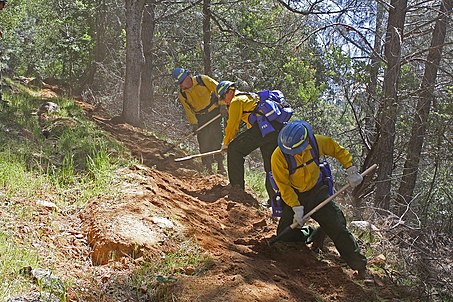
Del Norte Coast Redwoods State Park. (Photo: parks.ca.gov)
California’s Two Parks and Recreation Entities: What’s the Difference?
More than 75 million individuals visit California’s state parks each year
By Chris Micheli, September 8, 2020 6:40 am
California has two parks and recreation-related entities: the California State Park and Recreation Commission and Department of Parks and Recreation. What’s the difference?
California State Parks and Recreation Commission
Public Resources Code Division 1, Chapter 1, Article 2 was added in 1965 and Section 530 provides that there is with the Department of Parks and Recreation the State Park and Recreation Commission. Note that the Department’s name utilizes the plural “parks” while the Commission’s name uses the singular “park.”
Pursuant to Section 530, the Commission’s members include the following: Nine members are appointed by the Governor, subject to confirmation by the State Senate. Three members represent the public; one member must have demonstrated expertise in cultural or historic resources management; one member must have background as a park professional with experience in local, regional, or national parks, or may be a retired state parks employee from the department.
In addition, one member must represent nonprofit or other organizations with statewide policy expertise with the state park system or in operating one or more state parks through operating agreements or other arrangements; one member must represent a statewide conservation organization with expertise in the administration or programs of the department; one member must have a background in the recreational industry; one member must represent a local business community that has significant beneficial relationships with one or more state parks.
Finally, the Speaker of the Assembly and the Senate Committee on Rules each appoint one ex officio legislative member to the Commission. Pursuant to Section 534.5, the Director of the Department of Parks and Recreation acts as Secretary of the Commission and appoints any necessary assistants from employees of the Department.
The California State Park and Recreation Commission was created as the State Park Commission in 1927 and the Commission has specific authorities and responsibilities which are defined in the California Public Resources Code, such as approval of general plans for units of the State Park System, classifying units of the System, establishing general policies for the guidance of the Director of State Parks in the administration, protection and development of the System, and recommending to the Director a comprehensive recreation policy for the state.
Department of Parks and Recreation
Public Resources Code Division 1, Chapter 1 concerns the Department of Parks and Recreation. Chapter 1, covering Sections 500 to 563 was added to the Public Resources Code in 1965. Article 1 deals with the organization and general powers of the Department. Section 501 provides that there is the California Natural Resources Agency the Department of Parks and Recreation. The Department is under the control of an executive officer known as the Director of Parks and Recreation. The Director holds office at the pleasure of the Governor. He or she is appointed by the Governor and confirmed by the State Senate.
Section 503 specifies that the Department succeeds to all of the duties, powers, purposes, responsibilities, and jurisdiction vested in the Department of Natural Resources or the Director of Natural Resources and the divisions of Beaches and Parks and Recreation.
According to the Department, it manages over 280 parks around the State of California. The Department currently has divisions of Boating and Waterways, Off-Highway Motor Vehicle Recreation, and Office of Historic Preservation. The Department is also in charge of 15,000 campsites and over 4,500 miles of trails. And, over 75 million individuals visit California’s state parks each year.
- Statewide Child Support Registry - January 2, 2026
- Foreign Country Money Judgments - January 2, 2026
- How Many Bills Are on the Inactive Files? - January 1, 2026





John